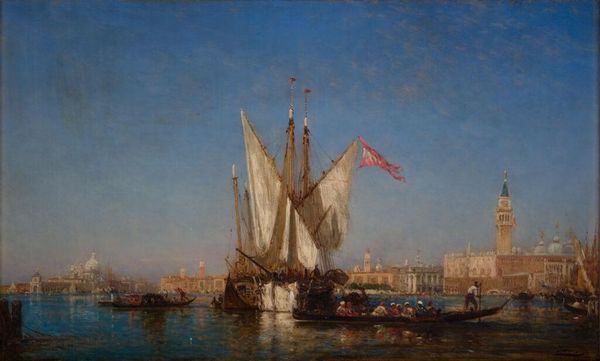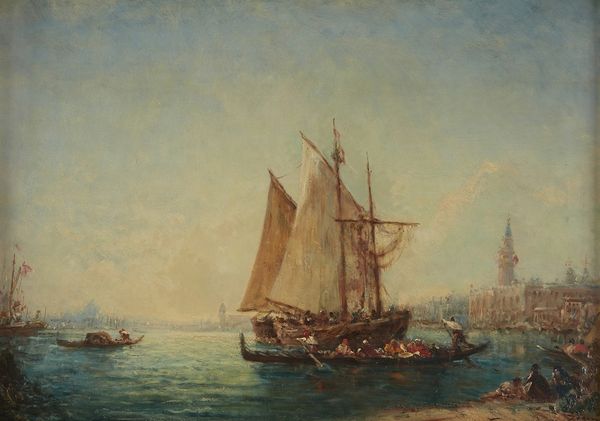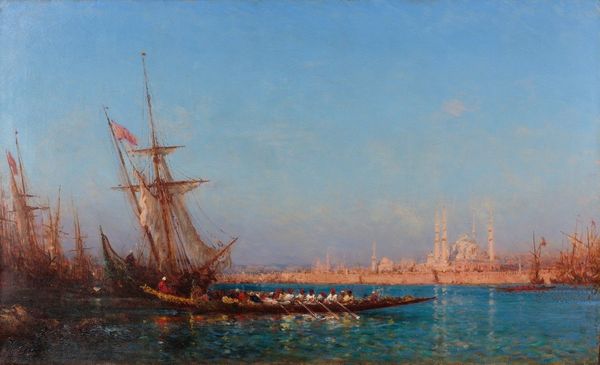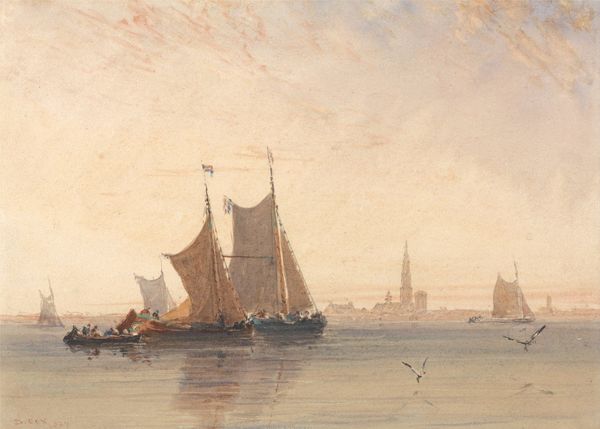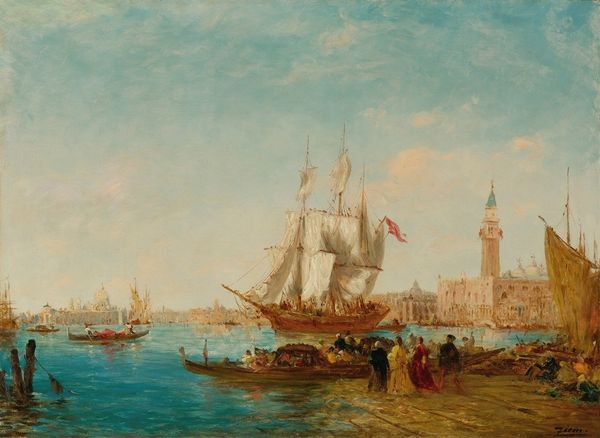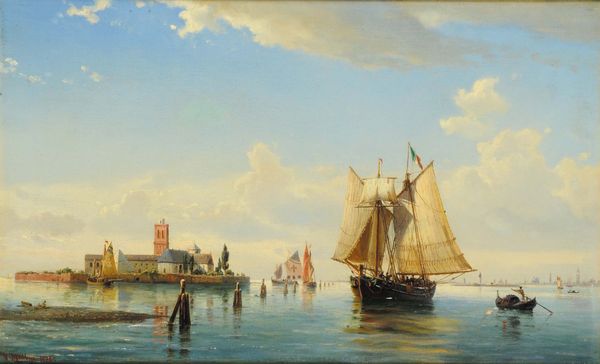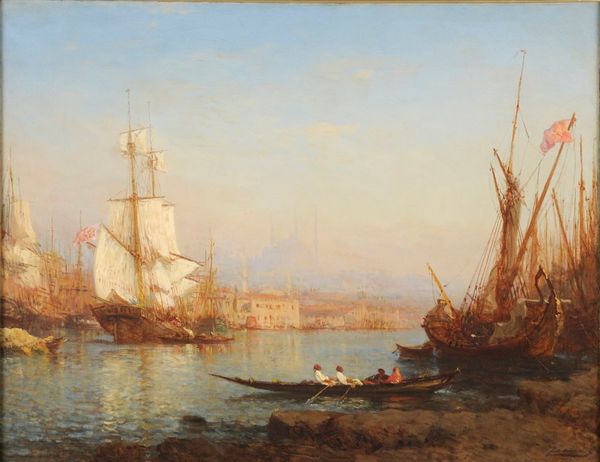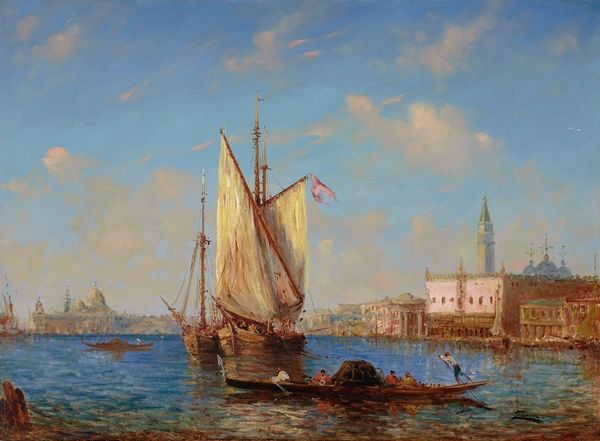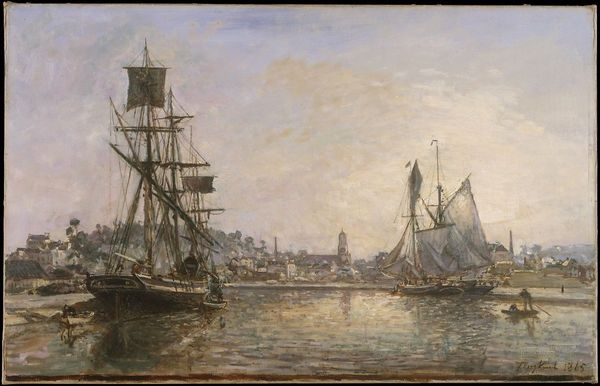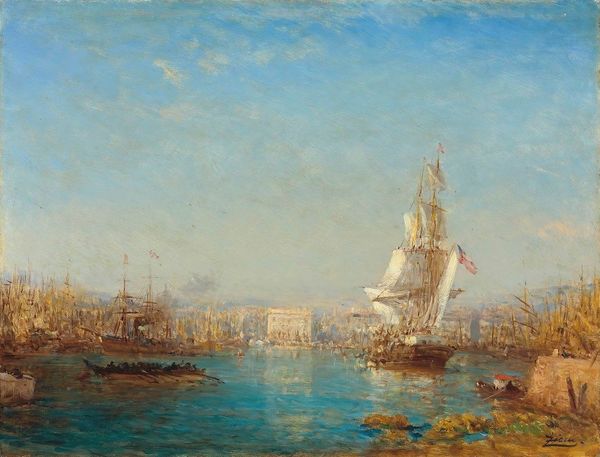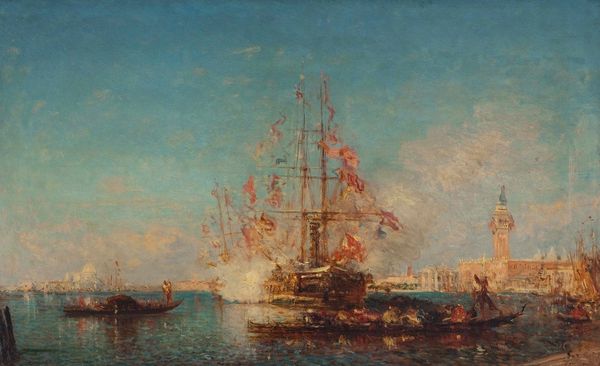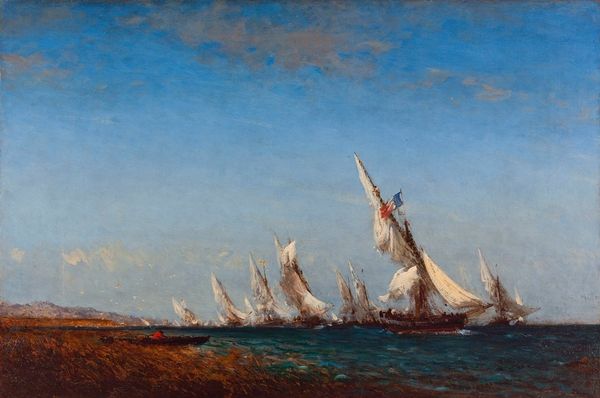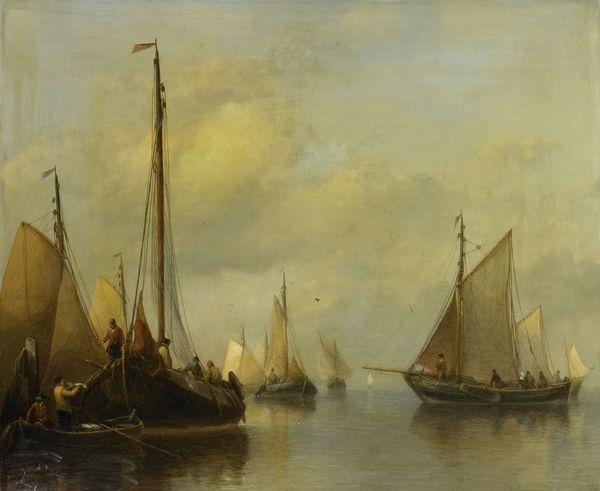
oil-paint
#
venetian-painting
#
water colours
#
impressionism
#
oil-paint
#
landscape
#
oil painting
#
cityscape
Copyright: Public Domain: Artvee
Curator: This is Fèlix Ziem's "Venice; The Entrance to the Grand Canal", an oil painting that beautifully captures the essence of the city. Editor: Immediately, the overall atmospheric haze strikes me. The figures seem incidental against the imposing architecture of Venice, evoking both freedom and constraints imposed by history and social structures. Curator: Ziem was known for his skillful rendering of light and color, particularly in his depictions of Venice. He favored loose brushstrokes and a vibrant palette. It's important to recognize this wasn't *just* sightseeing—his artworks tapped into a burgeoning tourist industry eager to consume idealized, romantic visions of Venice. How did the artist's social and financial background allow him the privilege of artistic freedom to move through different settings capturing moments, which many did not get the chance to? Editor: True. These are not neutral landscapes. They're shaped by who could afford to be there, consuming Venice. I mean, look at those boats packed with people—likely enjoying leisure activities unavailable to most Venetians working long hours just to keep the city afloat, literally. The exploitation that underpins idealized paintings, romantic moments for a certain demographic of people. Curator: Absolutely. The artwork also allows us to consider production methods. What specific pigments and oils were employed to accomplish the brilliant tones, and the methods that went into extracting them. How available were these resources and who was controlling these processes and methods? Editor: By emphasizing that these idyllic images are constructs dependent on certain people and material means, we ask viewers to engage critically, noticing the underlying power dynamics instead of passively enjoying the prettified surface. This becomes very clear when contextualized in its moment and even the context of now. Curator: Precisely. By understanding what constitutes the landscape, we develop our individual and shared criticality that promotes a more equitable social structure. Editor: Considering both the broader systems at work as well as materiality invites much more rigorous contemplation! Curator: It offers us insight far beyond just what we can see and enjoy.
Comments
No comments
Be the first to comment and join the conversation on the ultimate creative platform.
